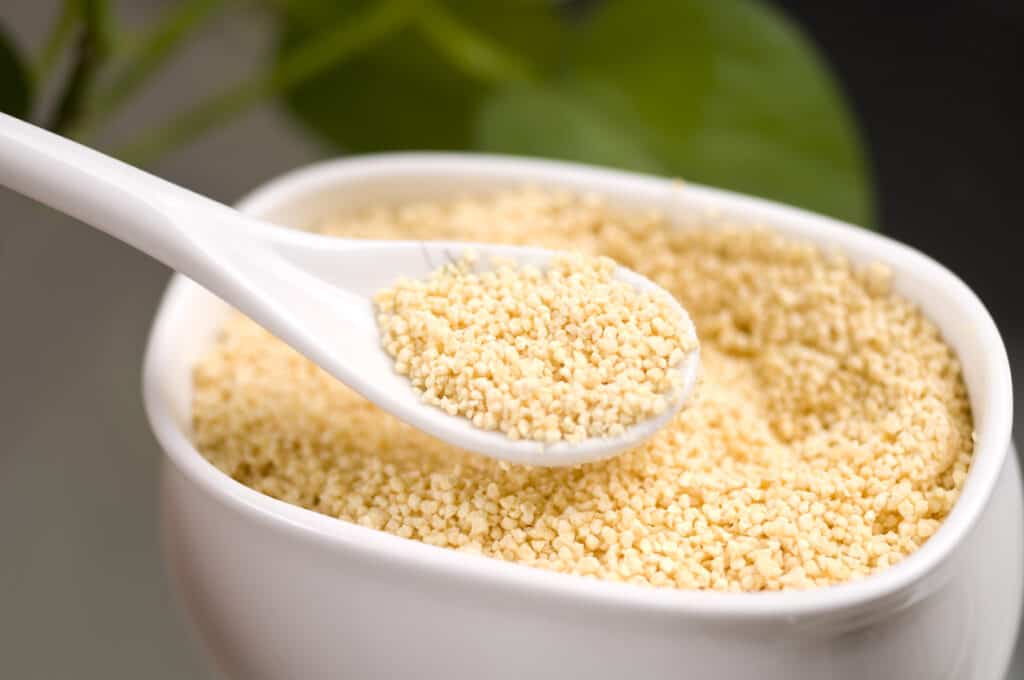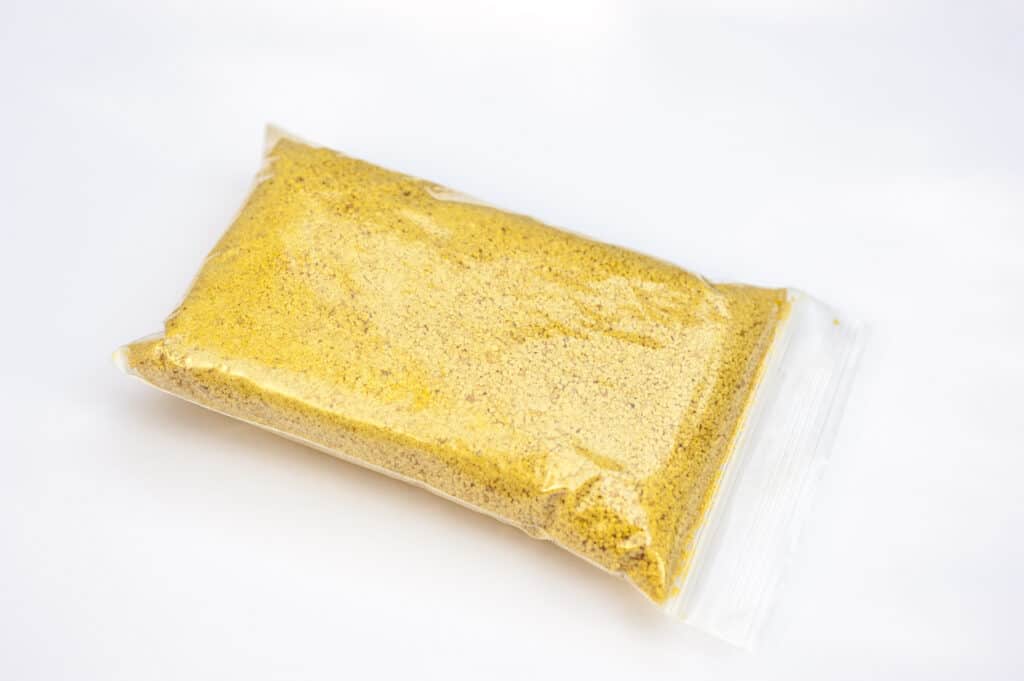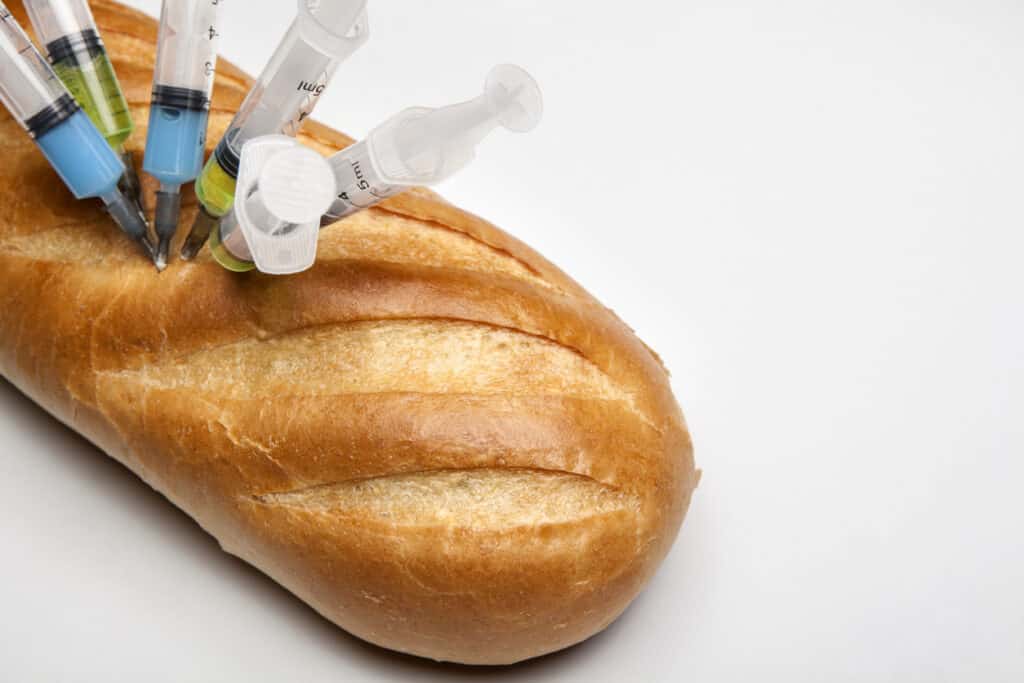After creating the perfect dressing for a fresh salad, a decadent topping for a baked treat, or even a nourishing homemade facemask, the last thing you want is to see your ingredients separate into an oily mess. To find answers to this disastrous outcome, you may have come across the term ’emulsifier’ – but what exactly is an emulsifier, and how can you use it?
A material or molecule known as an emulsifier, also known as an emulsifying agent, serves as a stabilizer for emulsions by preventing the separation of liquids that typically don’t mix. A device that shakes or stirs substances to create an emulsion is sometimes called an emulsifier.

Deciphering molecules, mixtures, and phases can make working with emulsifiers seem like an overwhelming science project. However, these additives are not as complicated as they appear at first glance. Adding an emulsifier to your recipe or formulation can mean the difference between a smooth, longer-lasting mixture and an oily mess.
What Is An Emulsifier?

An emulsion is known as a combination of two or more liquids that are often immiscible due to liquid-liquid phase separation. Depending on the nature of the liquids combined, different kinds of emulsions can be created.
For example, oil and water combine to produce an oil-in-water emulsion, in which the water serves as the continuous phase and the oil as the dispersed phase. These ingredients can also create a water-in-oil emulsion, in which the continuous phase is oil and the dispersed phase is water.
Emulsions can be as simple as combining only two immiscible phases or as complex as combining multiple phases. A “water-in-oil-in-water” emulsion and an “oil-in-water-in-oil” emulsion are only two examples of possible emulsions.
An emulsifier, also known as a surface-active substance, adsorbs at the newly formed oil-water interface, shielding the newly formed droplets from congregating to form large masses. Emulsifiers achieve this by raising a mixture’s kinetic stability, which prevents droplets from becoming large enough to allow components to separate according to density.
Thus, emulsifiers create and maintain oil-in-water emulsions, evenly distribute oil-soluble substances throughout a combination, stop the formation of large ice crystals in frozen mixtures, and enhance the volume, uniformity, and fineness of mixtures exposed to extreme heat.
An emulsifying agent’s fundamental structure consists of a hydrophobic component, often a long-chain fatty acid, and a hydrophilic component that can be charged or uncharged. A dispersion of tiny oil droplets is created when the hydrophobic and hydrophilic parts of the emulsifier dissolve in the oil and aqueous phases, respectively.
Along with the emulsifier’s composition, the emulsification technique is also essential. The emulsion’s capacity to withstand changes is increased by proper component integration. For example, using a blender instead of stirring the components by hand while creating an emulsion for cooking would help the mixture retain homogeneity.
How Do Emulsifiers Compare To Solubilizers?

Both emulsifiers and solubilizers aid in the dispersion of oils in water. As we know, oil and water don’t naturally mix; therefore, you need additives to avoid their separation within the mixture. Solubilizers and emulsifiers cannot be employed interchangeably even though they both fall under the category of surface-active molecules. Instead, they are distinct from one another in every other way.
Solubilizers are a class of entirely water soluble surfactants but also have limited oil solubility. They are used to dissolve oil in aqueous solutions, as their name implies. Given the size of the solubilized molecule’s particles, the solution is either fully clear or faintly translucent.
Emulsifiers, in contrast to solubilizers, are entirely insoluble in aqueous solutions. They are exclusively used for dissolving large lipid molecules in emulsions, and the particle size range in mixtures containing emulsifiers is in the micrometer range. Solubilizers are often used for smaller lipid molecules, and the particle size range of their mixtures is in the nanometer and lower micrometer range.
Furthermore, emulsifiers can achieve an oil phase concentration of up to fifty percent. However, solubilizers can only include modest amounts of a lipophilic component, approximately up to two percent. Although greater concentrations of larger lipid molecules can be included using emulsifiers, this process requires high mechanical force and may need additional heating. In contrast, solubilizers function at room temperature and require lower mechanical force to carry out their role.
So, how do you decide which additive to use in your emulsion? Firstly, determine whether the mixture will be an oil-in-water, such as a spray, or water-in-oil, such as a cream emulsion. If your product is an oil-in-water emulsion and highly liquid, a solubilizer will probably be needed to dissolve trace levels of oils in the water. As you might guess, emulsifiers are undoubtedly best for water-in-oil emulsions.
How To Choose An Emulsifier?
Emulsifiers are an additive in many products, from food to drugs, cosmetics, and paints. Therefore, choosing an appropriate emulsifier depends on the type of product that you intend to create.
Products intended for consumption, such as food, are generally best suited to natural and organic emulsifiers, such as lecithin. These are less likely to increase the risk of damage to your health, which is discussed later in this article. However, natural emulsifiers tend to be less stable than synthetic ones, so they are best suited to recipes or formulations intended to be used relatively quickly.
Since natural emulsifiers contain organic components that are more susceptible to microorganisms, synthetic emulsifiers are generally best suited to products that require a longer shelf life. Furthermore, synthetic emulsifiers are less likely to cause the formulation to crystalize, oxidize, or develop an unpleasant smell or odor.
Furthermore, generally, it is best to avoid combining natural and synthetic emulsifiers in the same formulation. However, it is unlikely that natural emulsifiers have not undergone some form of processing. For example, olive oil is a naturally derived emulsifier than has been processed to extract and purify the oil.
If you are creating a mixture intended for more than just personal use, there are several things to consider when choosing an emulsifier. Governing bodies such as the National Sanitation Foundation determine the safety of consumer products. Business owners must consider the certification status of their chosen emulsifier.
Not all natural emulsifiers receive certification because of the expensive certification fees. These kinds of costs ultimately determine the selling price of your product. You must also consider how uncertified ingredients influence your completed product’s certification.
Furthermore, business owners should consider how appropriate their choice of emulsifier is, depending on their target market. Being vegan, halal, or kosher, for example, are additional factors that you need to consider for consumers.
Likewise, certain emulsifiers are derived from sources that disagree with consumers’ belief systems. Since environmentally-conscious practices are a priority for many consumers in the face of climate change, choosing sustainably sourced ingredients is essential when opting for natural emulsifiers.
Just as the oil phase concentration determines whether you opt for a stabilizer or an emulsifier, this concentration also dictates the kind of emulsifier you should choose. Most emulsifiers perform best in a specific range of oil phases, depending on the amount of oil in the final product.
Some emulsifiers function better in low oil concentrations between three to ten percent. In comparison, others perform best in medium oil concentrations between fifteen to twenty-five percent, while others may emulsify high oil concentrations. Determining the best emulsifier for the mixture based on the oil phase concentration is your best bet at avoiding phase separation.
Your product may be a slightly viscous, aerated emulsion or a thick, rich formulation. Adding gums and other viscosity modifiers might change an emulsion’s viscosity, so you should first examine the emulsifier’s specification to see if it fits the intended viscosity range. Determining the viscosity is particularly crucial when dealing with low viscosity emulsions since some emulsifiers won’t function in those systems.
Similarly, when creating a list of ingredients, you must choose them based on the goals you set for your formulation. For example, if you intend to include alcohol as an ingredient or attain a specific viscosity, your chosen emulsifier may require the addition of a co-emulsifier or stabilizer. Your priority should be to find the perfect balance of additives to achieve the intended formulation.
Likewise, considering the logistical needs of a particular formulation is imperative when deciding on an emulsifier. For example, suppose you’re making a light dressing for a fresh salad. In that case, you’d consider using mustard rather than mayonnaise as your emulsifier because it creates a mixture with a lower viscosity which maintains the lightness of the dressing.
What Are The Health Effects Of Emulsifiers?
The Food and Drug Administration (FDA) in the United States has strict rules regarding the types and quantities of emulsifiers that can be included in consumables to limit the risk of harmful side effects. The FDA generally regards many of the emulsifying additives in food as safe. However, more recent studies have shed some light on the potential harm that emulsifiers cause.
When ingested in standard or small doses, natural emulsifiers, such as guar gum and lecithin, are not known to cause severe health hazards. However, consuming large quantities of food rich in these natural emulsifiers may cause digestive problems, including diarrhea, stomach discomfort, nausea, and bloating. Examples of foods rich in natural emulsifiers include organ and red meat, seafood, eggs, soy, dairy, and leafy vegetables.
In contrast, extensively processed emulsifiers, such as carboxymethylcellulose and polysorbate 80, are more difficult to digest. Epidemiologic evidence and animal studies implicate synthetic emulsifiers in profoundly impacting intestinal microbiota, promoting conditions associated with gut inflammation, including inflammatory bowel diseases and metabolic syndrome.
The good news is that emulsifiers are usually only included in food products in limited amounts. However, limiting your intake of processed foods that contain emulsifiers, and creating a balanced diet that includes whole foods containing natural emulsifiers, are most beneficial in protecting your gut biome.
To avoid potentially harmful emulsifiers, choose organically produced products made with minimal ingredients. These include foods such as vegetables, fruits, whole grains, eggs, fish, nuts, or seeds. Although some whole foods are rich in natural emulsifiers, consuming them in moderation is far less dangerous to your gut than smaller amounts of food containing processed emulsifiers.
Examples of Emulsifiers In Foods
It is imperative to practice mindfulness when shopping for groceries. We have compiled a short list of emulsifiers commonly found in food products. Be sure to read ingredient labels when purchasing foods to know whether you’re fueling your body without damaging your gut health. Synthetic emulsifiers that you should be cautious of include the following:
- Acetic acid esters are commonly found in cakes and toppings
- Ammonium phosphate found in chocolate products
- Carboxymethylcellulose is found in beer, salad dressings, ice cream, cheese, pie filling, candy, and cake icing
- Brominated vegetable oil found in soft drinks such as Mountain Dew
- Diacetyl tartaric acid esters found in biscuits and bread products
- Magnesium stearate is found in gum, herbs, spices, and supplement powders, capsules, and tablets
- Polyglycerol esters found in baked products, margarine, and whipped toppings
- Polysorbates 60, 65, and 80 are found in most sweets and desserts, alcoholic mixed beverages, soft drinks, and vitamin and mineral supplements
As we know, natural emulsifiers are less commonly associated with gastrointestinal disturbances. However, these emulsifiers may also assist with blood sugar and cholesterol management, digestion, and the sensation of feeling full. Natural emulsifiers that are generally considered safe include the following:
- Acacia found in frozen desserts, cake toppings, candy, food dressings, and soft drink syrups
- Baker’s yeast glycan is found in dips, cheese spreads, salad dressing, sour cream, and frozen desserts
- Carrageenan is found in animal and plant-based milk, frozen foods and desserts, protein shakes, deli meats, and yogurt
- Dextrin found in candy and powered mixes
- Guar gum is found in baked goods, breakfast cereals, dairy products, processed vegetables, soups, and syrups
- Lecithin is found naturally in eggs and soybeans and added to baked foods, chocolate, margarine, mayonnaise, and ice cream
- Xanthum gum is found in beverages, gluten-free baked products, ice creams, plant-based milks, and salad dressings
Conclusion
Emulsifiers are an additive and can sometimes be a mixing device that serves as a stabilizer for emulsions by preventing the separation of liquids that typically don’t mix. Emulsifiers are used in many products, from food to cosmetics and paint. Choosing an emulsifier best suited to your formulation needs guarantees a smooth and homogenous mixture.
References
https://www.thoughtco.com/definition-of-emulsifier-or-emulsifying-agent-605085
https://www.britannica.com/science/emulsifier
https://www.sciencedirect.com/topics/food-science/emulsifying-agent
https://microbiomejournal.biomedcentral.com/articles/10.1186/s40168-020-00996-6https://www.researchgate.net/publication/317640802_Comparing_the_effectiveness_of_natural_and_synthetic_emulsifiers_on_oxidative_and_physical_stability_of_avocado_oil-based_nanoemulsions

